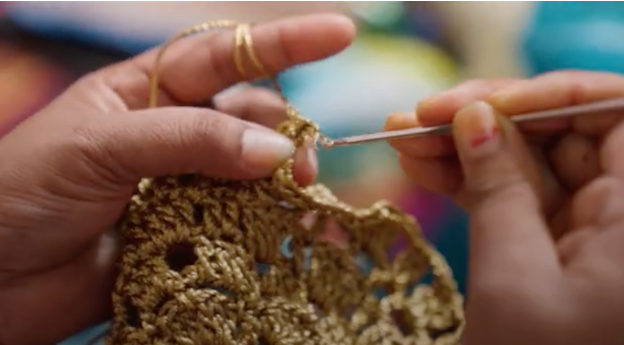How Does A Business Grow Through Product Development?
Jul 15, 2021 | Elijah Adebayo
 Below is the summary of the FUTURECRAFT.FOOTPRINT worlds most sustainable footwear brand made in collaboration with Allbirds and Adidas
Below is the summary of the FUTURECRAFT.FOOTPRINT worlds most sustainable footwear brand made in collaboration with Allbirds and Adidas 1. Developing the concept:
All new products start with a concept. If you don’t already have a concept for a new product, then you will need to develop one. This step will provide you with a fundamental approach to developing a new product concept
Above is a concept or for Jeremy Lin’s collab with Adidas. This is a good example of a business developing a concept for a new product.
Identify A Need
Most good concepts begin with either a perceived or a measured need. Ways to identify needs are:
Talk with your customers. Ask them what additional products they feel you should offer. Although this can be subjective, it can reveal some gaps in your current product line.
Conduct brainstorming sessions with key employees. Those who deal with your customers every day should have some sense of what a good product maybe to add to your current product line.
Listen to your own instincts. If you’ve already developed a successful business, then you have some insight into what your customers want.
You’ll probably have several needs from which to choose. Pick the one with the greatest impact on your customers. After all, they’re the ones that are going to buy your new product/service. Once you have identified the need, capture it in writing as clearly and concisely as possible. Describe the need and why it exists. Be sure to describe who the customer is.
2: SCREEN AGAINST ESTABLISHED CRITERIA
You can’t work on every great idea, so you’ll have to decide on criteria to help narrow your selection. There is no standard set of criteria that is best in all cases. You need to establish your own to suit your own company’s needs. The following questions may help decide what criteria are best for you:
Company’s Strengths
What strengths can you exploit to produce your product/service?
What are your technological capabilities?
What are your sales force capabilities?
What is your company’s current cash/credit position?
What is your company known for? Reputation?
Market Preference
Do you prefer a particular industry?
Do you prefer a product sold to retail users, industrial users, the government, etc.?
Do you prefer a product with long usage, or would you consider it a fad item?
Do you have a distribution preference?
Do you want to distribute internationally?
Are you willing to create a new sales and marketing team to support the product?
Sales Volume
What is the sales volume you expect?
Do you have any pricing expectations?
Will this product need to be self-sustaining (support all its operations)?
For example, after considering their needs, Heavy hammers developed the following criteria for their new product:
Market — Product had to be used by industrial firms. Retail was inappropriate and the government was out of the question.
Product — At least 50 percent of the manufacturing costs had to utilize current equipment. The new product must have a patent or be patentable.
Price — Since they were known as a low-cost supplier, the company’s new widget must fit within their current price ranges.
Volume — More than 5 million pieces sold by the third year.
Finance — The budget available is $55,000.
3. A plan for a development process
It is wise to plan your development process before you become too attached to your new product concept. If you fall in love with a new product concept before you have a development plan, then you may not make sound business choices as you work through the development process. This is not to say that you shouldn’t feel emotional or passionate about a new product but establish some guidelines early in the process so that you don’t lose sight of your objective — to develop a new product or service as cost-effectively as possible. This plan will keep you focused throughout the new product development process. Use the information in this Business Builder as a guideline for developing a plan. This Business Builder should also help you to estimate the amount of time and money you should invest in each of the development steps. The plan should include:
Making a timeline
A timeline will provide the impetus to complete your product development in a timely, cost-effective manner. Product development efforts that have no schedule for completion tend to be unnecessarily long and extremely costly. If you don’t have a product release date that you must meet, then estimate the amount of time it should take to complete each step and add the steps sequentially to the timeline. This will give you a good idea of when you should be able to release the product to market. If you are developing a product that must be released by a certain date, then develop your timeline by working backward from that date.
For example, if you are developing a new line of Halloween costumes that must be ready for release by early summer so that retailers can order them and receive them by September, then start with an early summer release date and work backward. This can be tricky since it often means that to make the release date, you must compress the amount of time it will take to complete some of the steps. Compressing steps may put a strain on your resources by requiring more overtime hours than you would have normally anticipated. If this is the case, then be sure to estimate the extra time in the resource needs a portion of your plan.
4.TEST YOUR CONCEPT
It is important to test your concept before you invest a great deal of time and money in the development process. Testing the concept should give you some solid indications about the product’s technical feasibility (Is it technically viable and can it be produced?) and commercial feasibility (Will people buy it?). At any time in this testing process, you may decide to scrap a concept and look for a better one.
Technical feasibility
Testing for technical feasibility requires a review of your own operational capabilities as well as whether the product/service technically does what it is supposed to do.
For example, Wacky Widgets developed a prototype for a new widget that when attached to a normal light bulb would extend its useful life 10 times. They were able to manufacture the new Weely Wacky Widget on one of their machines that had been sitting idle. The problem, however, was finding an adhesive that would withstand high temperatures. After they spent more than one year trying to develop such an adhesive with the world’s largest adhesive company, they had to scrap the project. They were able to produce the product; however, the product was not technically viable.
Depending on the nature and complexity of your product/service, technical feasibility could be a series of controlled experiments or just a few tests. Whatever the case, this testing should help you determine if you can make the product with your current capabilities, or if you need to invest in new production equipment or service capabilities. These types of considerations could be very critical to your decision to go ahead with the new product concept. After you are satisfied that you can produce and deliver a new product, you need to determine if it is a product that your customers will buy.
Recommended








